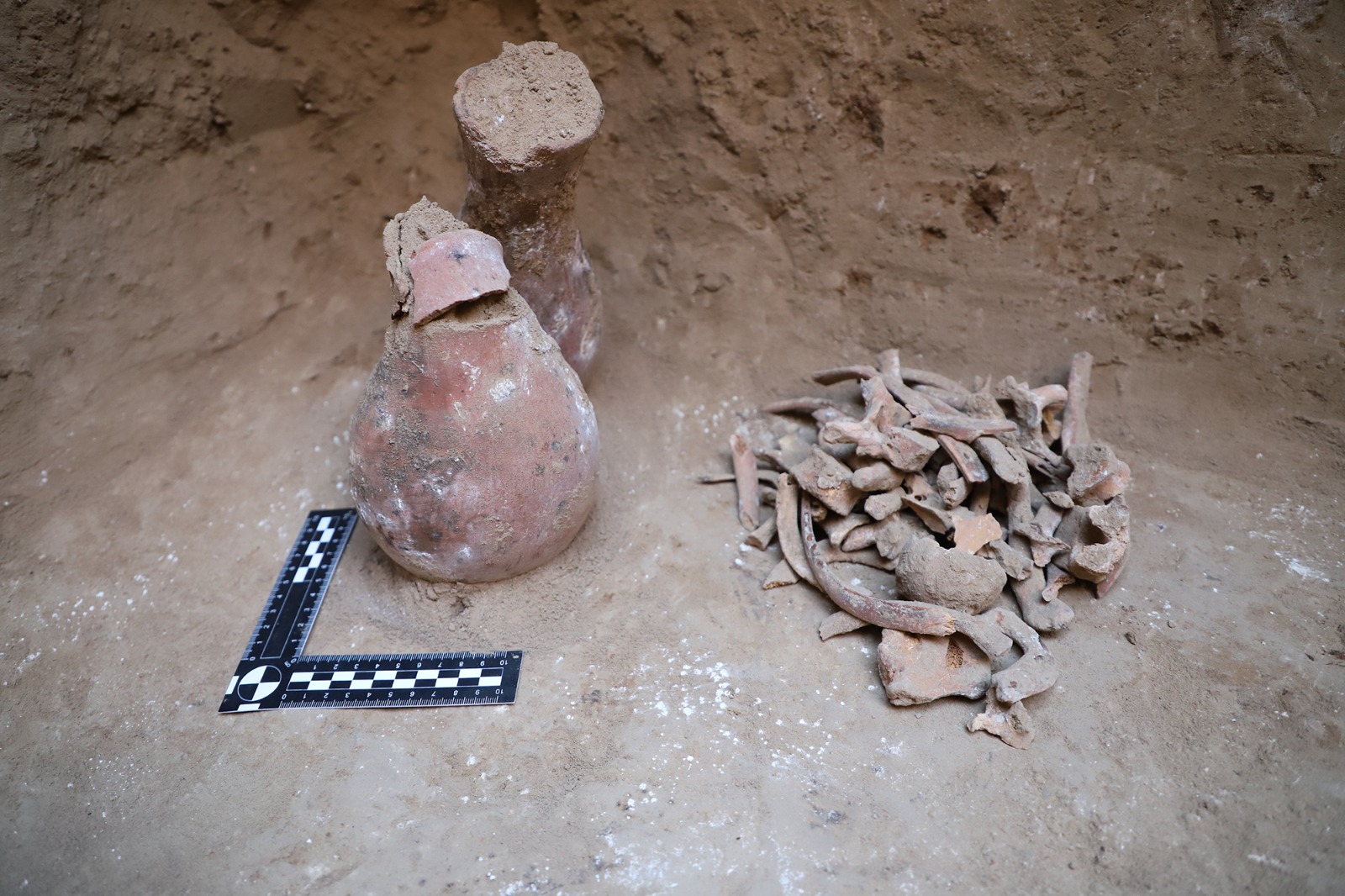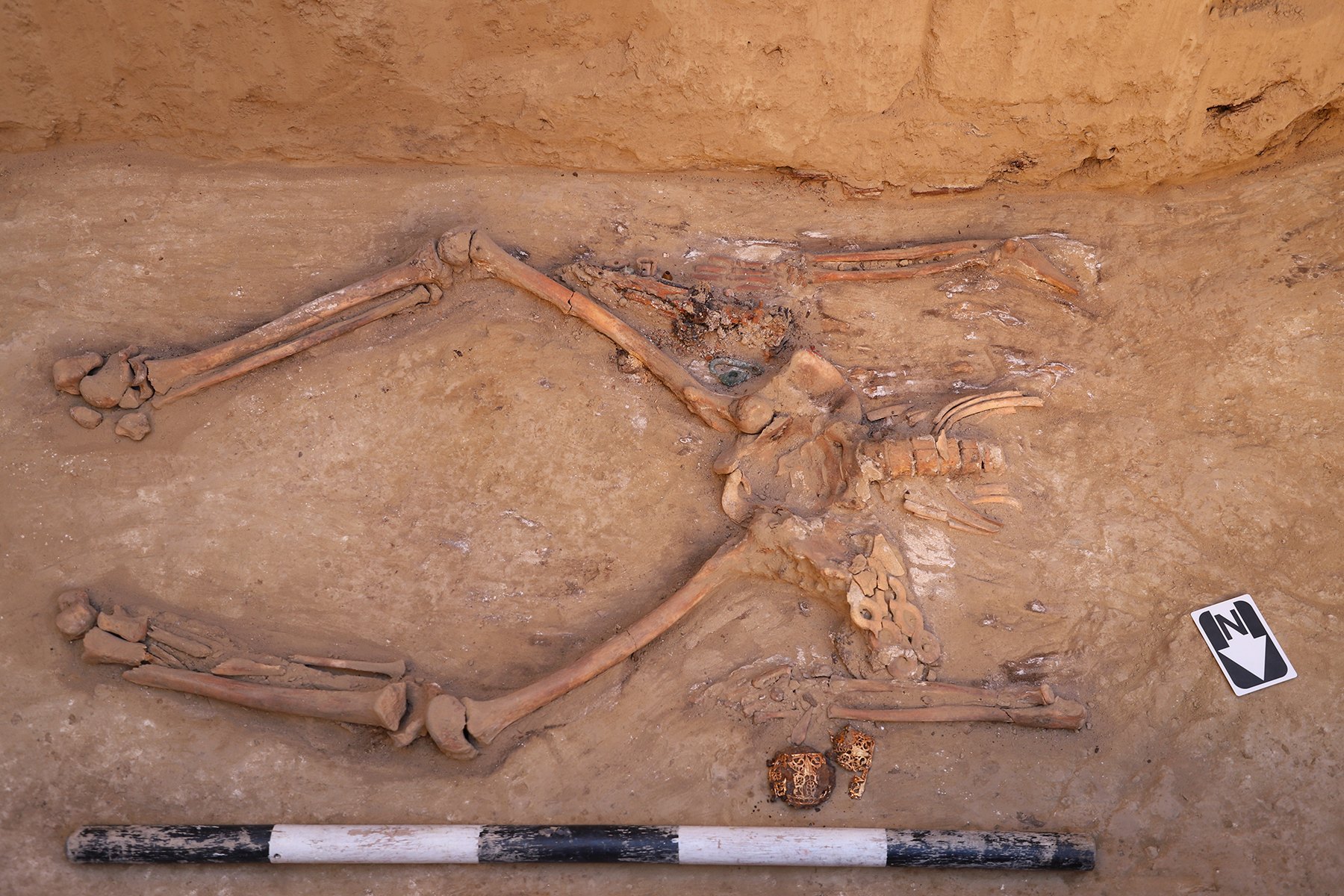KazNU archaeologists found unique items

The archaeological expedition of Al-Farabi KazNU near Taldykuran airport in Dauylbai burial ground excavated a mound of the early Iron Age.
This work was done on the initiative and at the request of the Center for the Protection of Historical and Cultural Heritage of Zhetysu region and the Department of Culture, Archives and Documentation of Zhetysu region.
In the course of field research it was found that the mound has been robbed several times, most recently last year. In this regard, archaeologists of the Center for Protection of Historical and Cultural Heritage of Zhetysu region decided to investigate this historical site.

According to some experts, the mound is elitist. The height of the mound is 3.4 m and its diameter is 40 m. There is a ditch around the mound. The robbers excavated from the western part and gradually moved to the central part. Field investigations were carried out in the central part of the mound, where the robber's manhole was opened. Initially, the excavation had the dimensions of 5x5 meters and was expanded according to the construction of the monument. The excavation revealed a stone shell and other structures, as well as the remains of scattered stone boulders, plates from robbers.
The head of the archaeological expedition, Doctor of Historical Sciences, Professor Dosbol Baigunakov told the following: "Two grave pits were identified at a depth of 5 meters from the surface of the mound. The first grave pit was robbed completely. Here we managed to discover only one sheep's shoulder blade. Apparently the remains of a ritual dish. In the second grave pit were found bone remains of a man, as well as two ceramic vessels, bones of domestic animals, a sword-akinak with a reddish-colored wooden blade. There were metal and bone plaques near the akinak. Bronze quiver hook, clip and needle, gold and bone buttonholes were also found. From gold articles were found: a thief, a pipe, as well as gold plaques resembling animals from the cat family.

Of great interest is a bone plaque depicting a dragon-snake. Such a find is rare in domestic archaeology. It testifies to the cult of snake, dragon or snake-dragon. In the mythology of the peoples of the world the role of the snake is dual. Here it may have had the status of a sacred animal and identified with some elements. In general, the sacral essence of this reptile is not in doubt".
According to experts, the excavated mound can be linked to the Yuezhi or Usun (Uisun) cultures that lived almost two thousand years ago in the Zhetysu region. In the future, archaeologists plan to conduct laboratory research. All details will be investigated, materials will be analyzed. It is expected that some finds will be recreated in the Scientific Restoration Laboratory "Crimean Island".